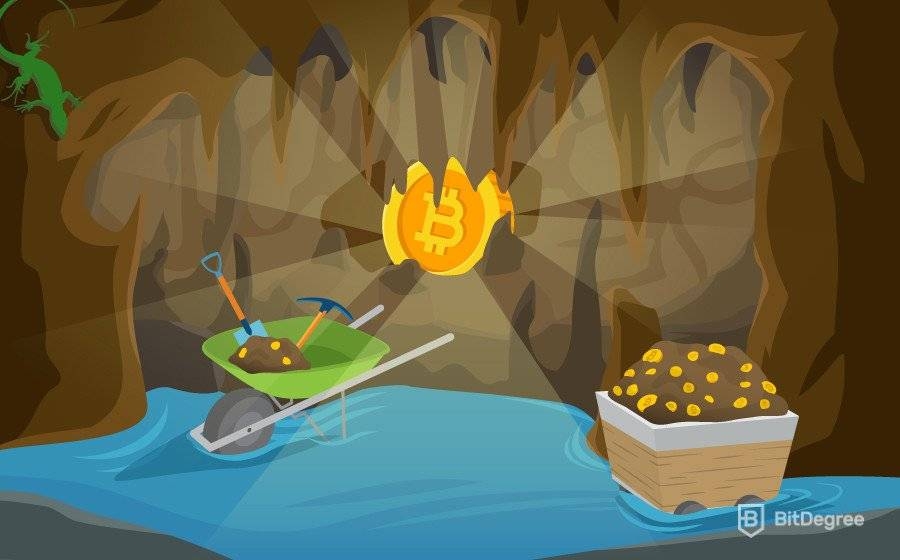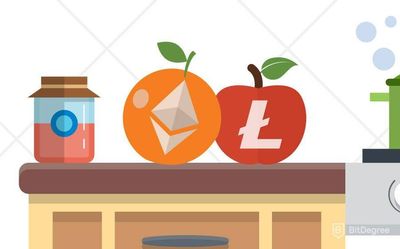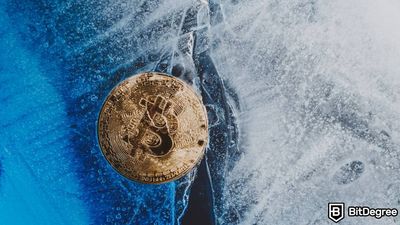Key Takeaways
- When learning how to mine Bitcoin, there are several solutions, including pool mining, cloud mining, and solo mining;
- Each mining method has its benefits and drawbacks, so every miner should consider their individual situation to choose the best fit for them;
- Bitcoin pool mining and cloud mining are the most popular options for beginners.
Free Airdrop Season 7 is LIVE! Answer fun questions or do simple tasks to earn rewards from the $30K BitDegree prize pool. Participate Now ! 🔥
So, you want to learn how to mine Bitcoin, right? Well, that’s good, because you've found the perfect place to start!
In the following guide, you’ll learn everything you need to know about Bitcoin mining, including the best places where to do it. Of course, if you want to do it, I’m going to guess that you already know the very basics about the amazing disruptive technological and financial breakthrough that is Bitcoin!
If you’ve ever wondered where Bitcoins come from, how transactions are kept secure and consistent on the Bitcoin network, or how long does it take to mine a Bitcoin, this guide should be of great help to you.
So, grab your shovel and your head torch, and let’s go mining! Just kidding. I’m sure you know we’re not actually mining, right?
Note: You can also purchase some Bitcoins from a trustworthy exchange instead of mining cryptocurrencies. If you're interested, check out Binance, Bybit or Coinbase!

Did you know?
Subscribe - We publish new crypto explainer videos every week!
What is ENS? Ethereum Name Service Explained (ANIMATED)
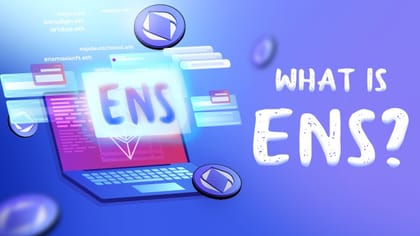

Table of Contents
- 1. How to Mine Bitcoin At Home
- 1.1. Block Rewards and Miner Fees
- 2. Best Bitcoin Mining Solutions For Beginners And Pros
- 2.1. Bitcoin Pool Mining
- 2.2. Bitcoin Solo Mining
- 2.3. Bitcoin Cloud Mining
- 3. How to Mine Bitcoin on a PC
- 3.1. Setting up the Gear
- 3.2. How to Check How Much You’ve Mined
- 3.3. How to Calculate Expected Profits
- 4. How to Mine Bitcoin On Android/iPhone
- 5. What is The Future Of Bitcoin Mining?
- 6. Conclusions
How to Mine Bitcoin At Home
Before I get started teaching you how to mine Bitcoin, I should first offer a brief explanation of what we mean when we talk about Bitcoin mining. As you most likely already know, Bitcoin is a blockchain-based cryptocurrency.
Latest Deal Active Right Now:Head to BitDegree Missions, gather as many Bits as possible & claim your stake of the $30,000 Prize Pool! Don't waste your time & start collecting Bits by completing Missions and referring friends.
It essentially works similar to a bank’s ledger (record of transactions). However, banks need you to trust them. Bitcoin is different. You only need to trust the code that created the network and its rules. It’s no coincidence that Bitcoin was created just after the global financial crisis of 2008. It’s been designed to be trust-less money!
But wait a minute, if you don’t need to trust a bank, how do you know that people won’t cheat the network? How do you know that every Bitcoin can only be spent once?
The network is secured by specialized computer units called miners that are distributed across a large number of unique entities. When you submit a transaction to the Bitcoin blockchain, these miners need to check that you have the necessary Bitcoin to send it and that various other rules are followed.
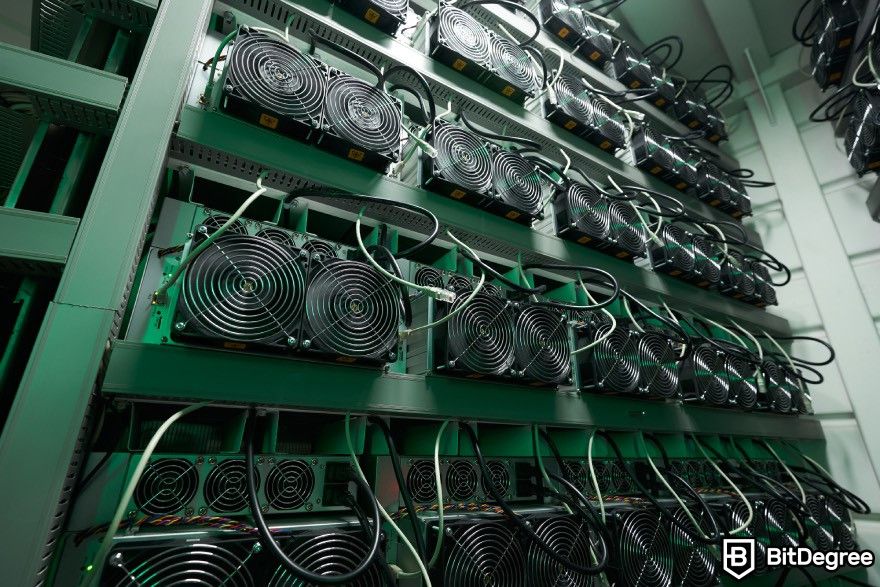
Transactions are grouped into blocks and then a string of characters must be guessed by the miners on the network. These characters are known as the “hash” of the block. Each block contains the hash of the previous block, as well as a new hash that needs to be guessed.
Once correctly guessed, the miner can add the block to the chain. This guessing process is called “proof-of-work”. It’s the single most important security feature that you need to know how to mine Bitcoin at home.
By including the hash of the previous block, the other miners on the network can verify that those transactions contained in a block did come after those in the blocks that went before it. This collection of blocks in the sequence is the blockchain. Simple, right?
Block Rewards and Miner Fees
Miners unlock new Bitcoin when they add a block to the blockchain. They also get the reward of the fees that users include in their transactions. However, it's getting more difficult for miners to be profitable.
As the number of Bitcoin miners increases, the difficulty of solving complex mathematical puzzles included in the hash soars. Thus, miners require more computational power to successfully solve a hash!
Consequently, energy consumption is a rising issue in the crypto mining industry. Electricity prices are steadily increasing, and it's getting more expensive to mine Bitcoins. I won't even mention the prices of mining rigs or other mining software and hardware since they cost from a few hundred to a few thousand dollars.

However, you might be wondering 'Is Bitcoin mining still profitable in 2024?' and the answer is complicated. While it depends on a number of factors, many people still choose to mine Bitcoin for the block rewards.
This makes it worthwhile to spend money on the electricity and computer systems needed to mine. When each Bitcoin is worth thousands of dollars, it’s a very strong incentive indeed!
Best Bitcoin Mining Solutions For Beginners And Pros
Ok, now that you know exactly why you would want to mine Bitcoin, let’s get onto the bit I’m sure you all came here for – learning how to mine Bitcoin! There are three ways to start mining Bitcoin.
| Mining method | Recommendation | Profitability |
| Pool Mining | Beginners and pros | Medium |
| Solo Mining | Pros | Large |
| Cloud Mining | Hobbyists | Small |
Table: Three ways to mine Bitcoin and their probable profitability.
I’ll look at these in a bit more detail and then I’ll get onto exactly how to mine Bitcoins! Keep in mind that each solution has its benefits and drawbacks, so you need to evaluate your individual situation before committing to a certain Bitcoin mining method.
Bitcoin Pool Mining
Bitcoin mining as part of a larger pool of miners is the easiest, fastest, and most reliable way to make sure your Bitcoin mining operation is profitable. In this case, you join forces with other miners to share the rewards.
By signing up with a pool, you (and everyone else in the pool) are agreeing to split any Bitcoin you're rewarded with the other pool members. This means that you will receive small payments regularly.
However, not all pools are the same. There are plenty of things you need to consider when choosing a pool. They are:
- The size of the pool;
- The minimum payments;
- The fees charged by the pool.
While you might be tempted by small pool fees, you should check the pool's minimum payments. Sometimes, mining pools only let you cash out after mining a significant amount of Bitcoin which can take years. So, make sure to evaluate a mining pool from every angle before committing!
For example, Binance Pool has over 32,000 active miners mining Bitcoin as of writing this. The pool is considerably large with fees ranging from 2.5% to 4%. These fees are definitely not the lowest on the market but Binance attracts numerous miners due to its good reputation and reliability. So, if you're interested in Bitcoin pool mining, check out Binance Pool.
Choose a Mining Pool
On your path to learning how to mine Bitcoin, you can choose any Bitcoin mining pool you want. However, we recommend you choose from one of these recommended pools to begin with:
| Pool Name | Pool Fee | Minimum Payout | Pool Address | Pool Size |
| Binance Pool | 2.5%-4% | N/A | stratum+tcp://bs.poolbinance.com:3333 | Large |
| Braiins Pool | 2.5% | 0.0002 BTC (with fee) 0.005 BTC (free) | stratum+tcp://stratum.braiins.com:3333 | Medium |
| ViaBTC | 2%-4% (depends on how shares are paid) | 0.01 BTC | stratum+tcp://btc.viabtc.com:3333 | Large |
| F2Pool | 2.5% | 0.005 BTC | stratum+tcp://stratum.f2pool.com:3333 | Large |
| Antpool | 0%-4% (depends on how shares are paid) | 0.005 BTC | stratum+tcp //ss.antpool.com:3333 | Large |
Table: Different Bitcoin mining pools and their features.
Each pool has different properties and fees associated with them, so make sure you evaluate each one. Your situation will be different from other miners and I suggest to make an informed decision when choosing a Bitcoin mining pool.
Consider the Size of the Pool
The size of the pool is an important thing to think about when you’re mining as part of a pool because as more people mine in the pool, the chances of being rewarded increase. However, since the rewards will be split between more users, they will also be smaller!
Joining large cryptocurrency mining pools is usually a comfortable option for beginners learning how to mine Bitcoin. While they will be getting smaller payments, they won’t be spending lots on electricity waiting for the next fraction of a Bitcoin to be rewarded to them.
So, despite smaller rewards, pool mining is the best Bitcoin mining solution for beginners. It won't cost you a fortune to get started and you can experiment with whether crypto mining is something you want to do!
Check What is the Minimum Payment
Another important thing to look at is the minimum payment that the pool will let you withdraw. By minimum payment, I mean the smallest amount of Bitcoin that the pool will let you take out.
If you’re very new to cryptocurrency mining, you’ll probably want to join a pool with as low a minimum payment as possible. This will mean that you can be sure that it all works as it should in a shorter period.
You don’t want to be using lots of expensive electricity amassing a few hundred dollars’ worth of Bitcoin only to find that the pool disappears, or something very bad happens in cryptocurrency news to make Bitcoin’s price suddenly drop!
Find Out About Pool Fees
Every pool charges a fee for organizing it all for you. The fee is usually a percentage of your profits. It will always be taken from the Bitcoin you mine automatically, so you don’t need to worry about paying it yourself!
Of course, we don’t need to tell you that your profitability increases when you pay a lower fee. That’s just obvious! Thus, you should look into the top Bitcoin mining pools with low fees like Binance Pool or Braiins Pool.

|
|
|---|---|
| Advanced Users & Beginners | |
| Turkey, Argentina, Vietnam, Ukraine, + 180 more | |
| See All Coupons of Best Exchanges | |
| One of the leading crypto exchange platforms in the industry. | |
|
See TOP10 Brands
Read review |
Table: Main information about the Binance cryptocurrency exchange.
Typical fees are between 1% and 4%. Pools with 0% mining fees do exist, too. However, their reliability is yet to be seen. Unless you know a person you trust who recommends a free mining pool, you’re much better off with one that has built a reputation for itself.
Running a pool is expensive. There are lots of computer systems and data center space that need to be paid for. It’s a full-time job for a few members of staff. Fees of around 2% are fair. However, you should probably avoid pools with fees above 4%.
Bitcoin Solo Mining
When talking about how to mine Bitcoin, mining alone is possible, especially if you have the right gear to do so. It probably seems like the best idea. Surely, you shouldn’t have to share your mining rewards with thousands of other people? Also, paying 1% on everything you make could end up expensive if you plan to mine for a long time.
Well, you’re right. Sort of.
Solo Bitcoin mining does mean that you don’t have to share your profits with a huge group of other people. However, it also means that you don’t get to share the profits of the thousands of other miners, either. You only get paid out if you’re the miner who solves the hash.

This means you’re not only competing with every other solo miner on the planet, but you’re also competing with every pool, too. Even if you have more computing power than every single miner in every pool, do you have more than the entire pool combined? Probably not!
That said, if you're a multi-millionaire, you could set up a profitable solo mining operation. You’d need to buy hundreds (if not thousands) of ASICs (application-specific circuit chips). For the very best mining chips, you will be looking at spending around $1,000 to $1,500.
Problems for Solo Bitcoin Miners
To run hundreds of computer chips will take a whole lot of electricity. The best possible way when learning how to mine Bitcoin now is with the help of the DragonMint T1 miner. This runs at 1,600W. Multiply this by 100, for example, and you’re looking at a giant power bill every month!
To make matters worse, running hundreds of computer chips gets hot. Think about using a laptop for a few hours on your knee. They can get pretty warm, right? The average laptop runs at around 60W. That’s about 26 times less power than a single DragonMint unit.
Now, imagine 100 of these bad boys running at once in a small room. You’re going to need some serious ventilation! That means more power consumption!
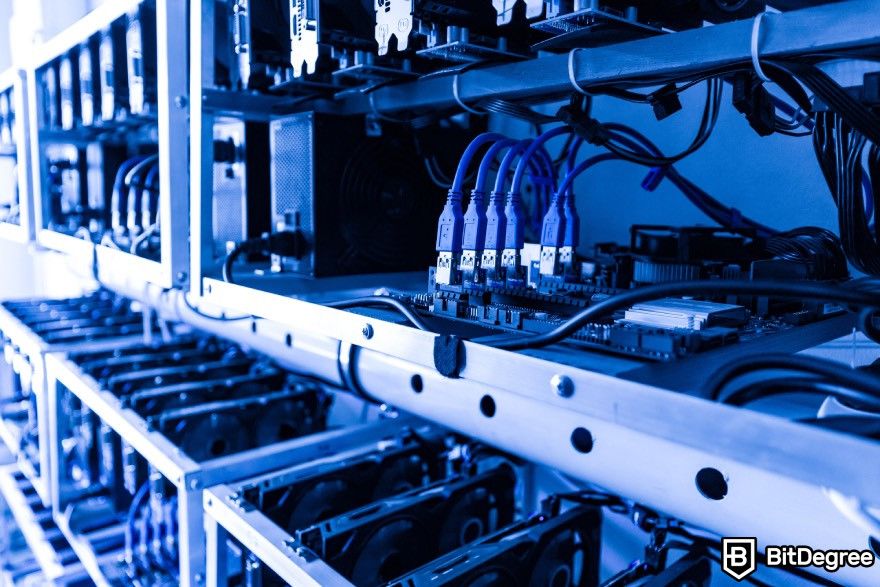
One of the concerns that will occur on your way to learn how to mine Bitcoin is the noise. With the constant buzzing of hundreds of computer components, plus industrial-scale cooling facilities running 24 hours a day, a professional scale solo mining operation is going to be hellishly loud!
When you look at where most solo miners have decided to set up their operations, you’ll see a pattern emerging. They like cool climates (less ventilation required), cheap electricity (the cost of power eats into the profits less), and remote, rural locations (there’s space for sizeable operations away from people who might complain about the noise). The top Bitcoin mining locations today are Iceland, rural Canada, and Russia.
Bitcoin Cloud Mining
You might ask why someone would bother spending the huge sums of money on expensive mining equipment to rent it out to someone else. The reason is simple. They want to guarantee profits on their investment and not have these affected by swings in the price of Bitcoin.
However, not everyone has so much money to invest in a solo operation. So, some people discover cloud mining when learning how to mine Bitcoin. Let’s look at some of the advantages and disadvantages of this mining option.
Advantages of Cloud Mining
Firstly, you’re not responsible for the equipment. If something breaks, you often don’t need to replace it or repair it. However, always be careful to read the small print in a cloud mining contract. The company might require you to pay for damage done to their equipment!
Secondly, you can make money by Bitcoin mining without spending thousands, or millions on mining equipment. This also means you don’t need to deal with the heat or the noise in your own home or other potential locations.
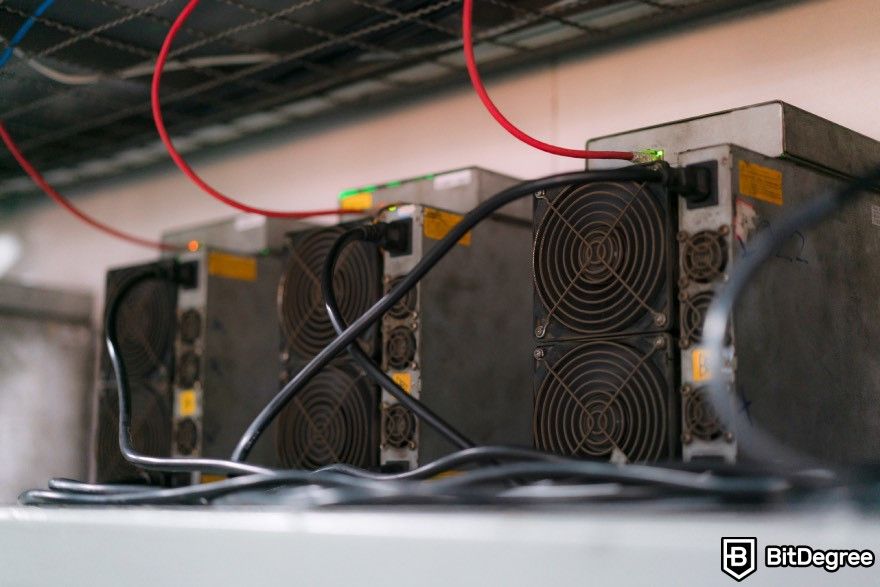
The final advantage is that you don’t need to know anything about cryptocurrency mining. If you want to cloud mine, you probably don’t need this guide on how to mine Bitcoin at all! Simply visit a reliable platform, sign up, and start mining!
Disadvantages of Cloud Mining
Firstly, you need to pay money upfront. If the price of Bitcoin drops considerably, you might be stuck in a contract and mining at a loss until the price increases again (if it ever does). You take all the risk as the cloud mining operator is guaranteed a profit.
Moreover, you can’t upgrade or change either the mining software or hardware used by the cloud mining provider. Therefore, you need to choose your Bitcoin cloud mining provider after careful consideration!
Also, cloud mining companies are targets for hackers. In July of 2017, Genesis Mining was hacked. Bitcoin was transferred from the company’s hot wallet to an external wallet.
Tip: If you want to get hold of some cryptocurrency but don’t want to invest in expensive mining hardware, you might want to consider buying some Bitcoin instead of spending your money on a cloud mining contract. This way, if the market takes a dramatic downturn, you could sell your position as opposed to getting stuck in a mining contract that is becoming more and more worthless by the day.
How to Mine Bitcoin on a PC
So, you probably want to start mining Bitcoin already? You can do that using pool mining. There are a few things that you must have before you begin:
- At least one ASIC Bitcoin mining rig.
- A mining application.
- A digital wallet to store the Bitcoin you make.
- Ventilation equipment – fans, ducting (only for larger operations).
- Membership at a pool.
- Power Splitters.
- Power supply units (the wattage of your ASIC will determine how many and of what power you need).
- Ethernet cable.
- Internet connection.
- Computer or mobile device capable of browsing the internet.
After you've bought the equipment, you'll still need to set it up and get it running. While it might seem like a lot of work, it's part of the process when learning how to mine Bitcoin on a PC!

Did you know?
Subscribe - We publish new crypto explainer videos every week!
What is an NFT? (Explained with Animations)


Setting up the Gear
The specific setup options will vary depending on the model of ASIC miner you are using. The manufacturer should detail exactly how to do this in their user manual or on their website. The following guide is specific on how to mine Bitcoin with the Antminer S9 unit on the Antpool. However, much of it will be useful no matter what ASIC miner you decide to use.
Step 1: Find the power draw of your ASIC. This should be clearly stated in the manual under specifications. For example, the S9 uses 1,375 Watts.
Step 2: Match your power supply units to the power draw. Two 110v PSUs of 1,000W and 650W will be sufficient for most single-miner operations.
Step 3: Connect the power supply units to the miner unit using the relevant connections.
Step 4: Once connected to the power supply, insert an ethernet cable and plug it into your internet’s router.
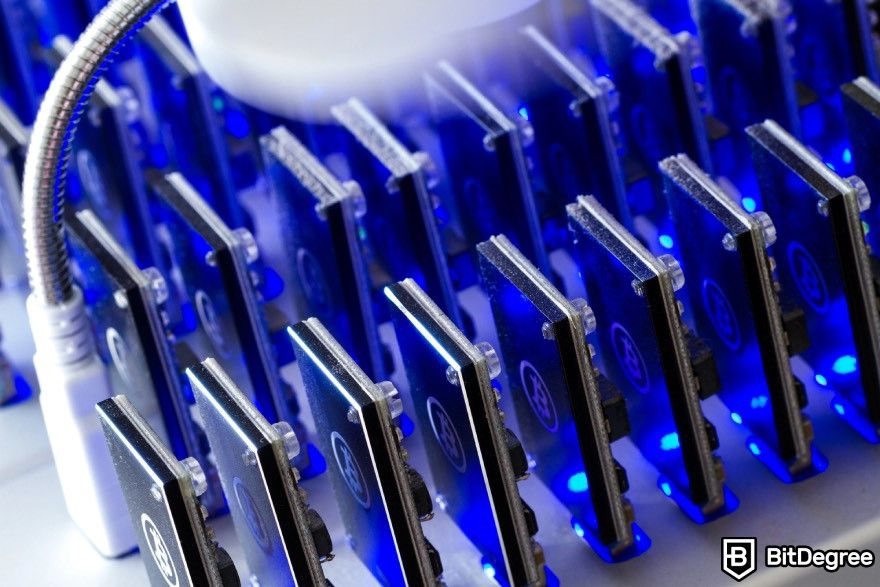
Step 5: Make sure all the necessary connections are made, then power up the power supply. Your miner unit should now come on.
Step 6: On your computer or mobile device, use an IP scanning tool to show the devices connected to your internet connection. You should see your miner unit listed. You can then type the IP address of the miner unit into your browser window on your chosen device.
Step 7: The next screen you see should be the login window of the miner. In the case of the Antminer S9, the default login details are username – root, password – root. You can change these by clicking on the “Admin” tab. I recommend doing this.
Step 8: You will now need to enter various details from the mining pool you will be using. You should be able to find these out easily from the website of your mining pool. For example, Binance Pool provides the essential information you might need as well as tutorials on how to start mining Bitcoin! So, check them out if you need a detailed guide.
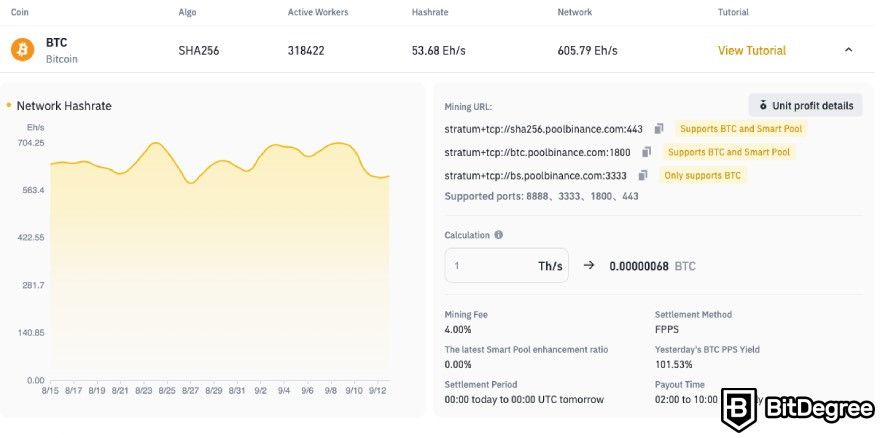
Step 9: Once entered, your miner unit should begin mining in the pool.
How to Check How Much You’ve Mined
Every mining pool will have its user interface. However, the idea is always the same. You need to visit your pool’s website and type in your wallet’s public address when prompted.
Type your wallet’s public address in the search bar. This will let you see all the information about your Bitcoin mining efforts so far. Some pools will let users set how much they want to mine before their Bitcoin is automatically sent to the external wallet address they specified.

- Secure and reliable
- Accepts fiat currencies
- Lots of trading options
- Reputable exchange
- Accepts fiat currencies
- Offers various trading options

- Fiat currencies - accepted
- Simple to use
- Accepts only the most trustworthy cryptocurrencies
- A leading cryptocurrency exchange platform
- Best for beginner investors
- Accepts fiat currencies

- Fully reserved and transparent
- Multiple tradable asset classes
- Over 300 supported cryptos
- Over 300 cryptocurrencies
- Secure & transparent
- Fully reserved
How to Calculate Expected Profits
If you want to check how much you should be earning, you can use a mining calculator. CryptoCompare provides an easy one.
Step 1: Open your mining software and check how many Megahashes per second it is doing (Mh/s).
Step 2: Load up the mining profitability calculator.
Step 3: Enter your current mining hashing power.
Step 4: Enter the power consumption of your unit or units.
Step 5: Enter the cost of your electricity in kWh. You should be able to get this from your energy supplier.
Step 6: Enter the pool fee for the pool you are using.
In the example from the picture below, we’re using a single DragonMint T1 miner mining on the Binance Pool. Our electricity is about the average rate in the UK. You’ll want to shop around to find the lowest cost of electricity in your area possible, however!
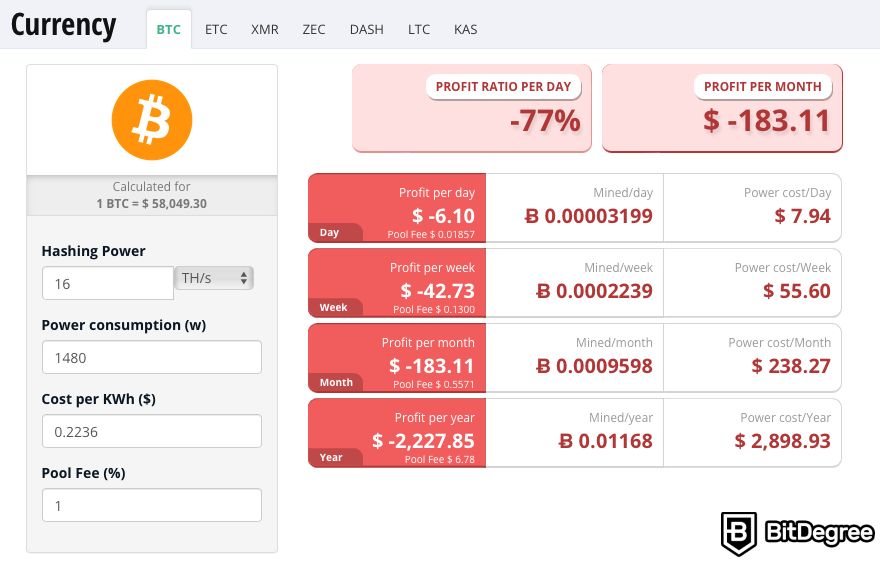
As you can see, mining in the UK isn’t particularly profitable! The high price of electricity means that you will be losing $6.10 every day, even with the most efficient miner on the market. When you factor in the price of the unit itself, this example operation is going to be incredibly expensive!
If you’ve ever wondered how long it takes to mine a Bitcoin, you can see that it depends on your hardware. Usually, it takes anywhere from 10 minutes to 30 days for one Bitcoin to be mined on the blockchain.
How to Mine Bitcoin On Android/iPhone
The simple answer is you don't mine Bitcoin on Android or iPhone. Simply put, mobile phones aren't powerful enough to withstand the mining process. Cryptocurrency mining is a resource-intesive process, so power consumption is a real issue[1] no matter which mining method you choose.
If there are any tutorials on the internet claiming otherwise, make sure to check your phone's manual and see if it's viable. In most cases, it won't be possible, so you can save time and effort by choosing other ways to mine Bitcoin.
There are some mobile Bitcoin mining apps but most of them are simply cloud mining or pool mining mobile apps. It might be an appealing choice if you like to check your investments on the go.
However, you need to carefully consider which Bitcoin mining solution is the best fit for you in terms of profitability and not convenience. Otherwise, you might lose a lot of money in the process!
What is The Future Of Bitcoin Mining?
Bitcoin mining is very important. It’s worth doing even if you’re not making huge (or any) profits. As more miners work on the network, that network becomes more secure. So, a natural question arises – is Bitcoin mining still profitable? The answer is probably no. However, some people learn how to mine Bitcoin for the increased infrastructural security instead of making a ton of money.
For example, some hobbyist miners mine the network at a loss. They see it as their duty to run a miner to increase the network’s decentralization and reduce the likelihood of a potential attack being successful.

Unfortunately, Bitcoin mining is highly competitive[2] these days. Without a huge investment and the freedom to set up somewhere with low electricity rates and a cool climate, your chances of making a lot of money with Bitcoin mining are very slim. You can check out probable profitability with certain calculators and see when (and if) you'll start making money.
Nevertheless, you can still mine Bitcoin to contribute to the network's security. There are top Bitcoin mining pools with low fees like Binance Pool that can be a cost-effective choice for both beginners and pros. By choosing this route, you can become an important part of Bitcoin's network and save money on buying expensive mining rigs!
Conclusions
So, that’s it! That’s my guide on how to mine Bitcoin. I’ll close the guide with a few thoughts on Bitcoin mining.
Even if you’re not planning on mining Bitcoin, it’s still good to learn how to do it so you can understand the technology better, as well as the wider industry.
If you don't have a lot to spend and are more interested in profits than you are in securing the network, you can always mine a different cryptocurrency. Several digital currencies can still successfully be mined with a GPU or CPU chip. Ethereum and Monero are amongst the most popular choices. However, a quick search of the web will find many more obscure projects that can be mined with less expensive hardware.
So, that was it. That’s the end of this how to mine Bitcoin guide. I hope you learned a lot!
You should now know pretty much everything you need to know about mining Bitcoin; from the reasons you should consider mining Bitcoin to the setup procedure, and the answer to the question 'how long does it take to mine a Bitcoin'.
Also, if mining doesn't seem like your cup of tea, you could also just purchase some Bitcoin on one of the more reliable exchanges, such as Binance, Bybit, or Coinbase!
The content published on this website is not aimed to give any kind of financial, investment, trading, or any other form of advice. BitDegree.org does not endorse or suggest you to buy, sell or hold any kind of cryptocurrency. Before making financial investment decisions, do consult your financial advisor.
Scientific References
1. K. J., O'Dwyer, D., Malone: 'Bitcoin mining and its energy footprint';
2. N., Dimitri: 'Bitcoin mining as a contest'.


